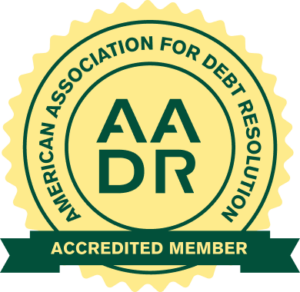Private Student Loan Debt Relief
Navigating the world of student loans is an education unto itself. Making well-informed decisions can help you now and in the long run.
How Do Private Student Loans Work?
According to MeasureOne, private student loans make up 7.89 percent or $131 billion of outstanding US student loans. Like federal loans, they are used to pay for college costs including education and living expenses. The main difference is that private loans originate with a bank, credit union or online lender that sets parameters on how much you can borrow and how you can spend the money. They also carry fewer borrower protections than federal loans and tend to be more expensive. Since their interest rates vary over the life of the loan, you could suddenly face higher monthly payments—especially as interest rates continue to climb.
Private student loans are best used to fill a payment gap after you max out federal loans. It is important that you make on-time payments since they are considered in default if they are more than 120 days past due. Most private lenders will then sell your debt to a collections agency or might even pursue a lawsuit. You are required to have excellent credit to qualify for the lowest advertised rates on private loans. Most borrowers are charged higher interest rates—sometimes double-digit. In addition, private loans are practically never forgiven.
Before we get into the nitty gritty of private student loans, let’s compare its features to federal student loans.
Private Student Loans
Private student loans are nonfederal loans offered by private organizations such as banks, credit unions, and state-based or state-affiliated organizations.
Federal Student Loans
Federal student loans are funded by the federal government, with terms and conditions set by law.
| Subject | Federal Student Loans | Federal Parent Loans | Private Student Loans* |
|---|---|---|---|
| When payments become due | Payments aren’t due until after you graduate, leave school, or change your enrollment status to less than half-time. | You (the parent) can choose to put off payments until the student you borrowed for graduates, leaves school, or changes enrollment status to less than half-time. | Many private student loans require payments while you are still in school, but some do allow you to defer (put off) payments during that time. |
| Interest rates | The interest rate is fixed and often lower than private loans—and much lower than some credit card interest rates. View the current interest rates on federal student loans. | The interest rate is fixed and may be lower than private loans—and much lower than some credit card interest rates. View the current interest rates on federal student and parent loans. | Private student loans can have variable or fixed interest rates, which may be higher or lower than the rates on federal loans— depending on your circumstances. |
| Subsidies | If you have financial need, you may qualify for a loan with which the government pays the interest while you’re in school at least half-time and during certain other periods. This type of loan is called a subsidized loan. | These loans are not subsidized; therefore, you will be responsible for all the interest. | Private student loans are often not subsidized. In the case of an unsubsidized loan, you will be responsible for all the interest on your loan. |
| Credit check | You don’t need to get a credit check to qualify for federal student loans (except for PLUS loans). | They will check your credit before determining whether you are eligible. | Private student loans often require an established credit record or a cosigner. |
| Tax benefits | Interest may be tax deductible. | Interest may be tax deductible. | Interest may be tax deductible. |
| Consolidation and refinancing | Loans can be consolidated into a Direct Consolidation Loan. Learn about your consolidation options. | Loans can be consolidated into a Direct Consolidation Loan. Learn about your consolidation options. | Private student loans cannot be consolidated into a Direct Consolidation Loan but may be refinanced. |
| Postponement options | If you are having trouble repaying your loan, you may be able to temporarily postpone or lower your payments. | If you are having trouble repaying your loan, you may be able to temporarily postpone or lower your payments. | You should check with your lender regarding options for postponing or lowering your loan payments. |
| Repayment plans | There are several repayment plans, including an option to tie your monthly payment to your income. | There are several repayment plans, including an option to tie your monthly payment to your income. | You should check with your lender to learn your repayment options. |
| Prepayment penalties | There is no prepayment penalty fee. | There is no prepayment penalty fee. | You need to make sure there are no prepayment penalty fees. |
| Loan forgiveness | You may be eligible to have some portion of your loans forgiven if you work in public service. | You may be eligible to have some portion of your loans forgiven if you work in public service. | Although many private lenders do not offer loan forgiveness programs, some student loans from state agencies can be forgiven in certain circumstances. |
| Where to find help | Contact your loan servicer first. | Contact your loan servicer first. | Contact your loan servicer first. |
- Cosigned Loans
- Sallie Mae
- Undergraduate
- Graduate
- Career training
- MBA
- Medical school
- Dental school loans
- Health profession programs
- Graduates studying for the bar exam or relocating for medical and dental residencies
If you take on a cosigned loan, you are accepting responsibility for the private student loan if the original borrower is unable to pay as agreed. Whatever you cosign will show up on your credit report as if the loan is yours. Depending on your credit history, this may impact your credit score.
Sallie Mae is one of the largest private student loan lenders in the industry. It lends to borrowers who are often ineligible for student loans from other lenders, such as DACA students or foreign residents. Its loans cover:
- Compare Private Student Loans
- What is the interest rate range?
- Can you choose a variable or fixed interest rate?
- Any student loan fees, like an origination fee?
- Is there a choice of in-school repayment options, including fixed, interest only, or deferred?
- Are there benefits that help you lower your interest rate?
- Is there a program that lets you make more manageable payments ‑ like interest only- for a set amount of time after graduation?
- Are there other benefits that make the private student loan superior?
- Is the company reputable?
Not all private student loans are the same. That’s why it’s important to compare your options before deciding which one is right for you. Questions to ask yourself include:
Will Private Student Loans be Forgiven?
In a word: no. None of the programs the Biden administration has introduced have benefited borrowers with private student loans. Since they aren’t controlled by the government, they don’t afford the same protections as federal student loans. Legally, private lenders don’t even have to discharge student loans if a borrower becomes permanently disabled or dies.
There has been discussion around canceling private student loan debt—mostly for borrowers with a lower income or who qualify for financial hardship or disability. But nothing has been passed yet and this is a controversial topic, so don’t count on it anytime soon.
There are a few exceptions, but they take a long time to reap the benefits. Any outstanding balance on a private student loan for undergraduates will be forgiven if you haven’t repaid your loan in full after 20 years. After 25 years, any remaining debt for graduate studies will be discharged or forgiven.
Under current law, discharged debt is treated as taxable income. That means you will be responsible for income taxes on the amount that is discharged. A sure-fire way to get rid of student loans is by paying off the balance in full.
Private student loans like Sallie Mae will also not be forgiven under the Biden administration’s forgiveness plan. If you default on your loan, you may be charged late fees for delinquency. This can add to the total cost you pay in the end. You may also lose any interest-rate reduction programs you were originally eligible for. Late payments may be reported to consumer reporting agencies and can have a negative impact on your credit report.
There are still ways to get relief from a private student loan
Even though private student loan cancellation is unlikely, there are still strategies you can take to ease your debt burden:
- Pause payments on federal student loans
- Loan Payment Assistance Programs
- Refinance for a lower interest rate
- Speak with your lender about repayment options
- Settle your debt
- Bankruptcy
Lowering or pausing the payments on federal loans and then redirecting that money to pay off your private loans quickly makes sense for two reasons. First, private student loans typically carry higher interest rates than federal loans. Second, they have fewer options to access affordable repayment plans. Your total federal student loan debt will increase due to interest accruing during this time. But you can take advantage of repayment plan forgiveness after making at least 240 qualifying payments.
Many states have programs that award loan repayment assistance to borrowers who work in certain professions. Eligibility requirements vary by profession, but the most common occupations are medical professionals and lawyers. Other career paths may qualify depending on where you live.
If you have good credit and a clean credit history, you can refinance your private student loans at a lower interest rate. Many lenders will let you choose between a fixed and a variable rate. A fixed rate stays the same until you pay the loan in total, while a variable interest rate goes up or down depending on the market. Use a site like Credible to compare loan terms and repayment programs with multiple lenders.
Private student loan servicers typically offer temporary interest-only repayment terms and deferment or forbearance options, which lets you postpone payments. Deferment is usually an option if you return to school or are active-duty military. Forbearance is typically an option for borrowers experiencing financial hardship due to job loss or medical issues.
Private student loan companies accept settlements for borrowers who have missed monthly payments and defaulted on their accounts. Settlement terms vary by lender. It is not uncommon to pay 40-70% of the current loan balance in a lump sum, through monthly payments, or a combination of both.
Although the process is not without its hurdles, private student loans can be discharged if you file a Chapter 7 or Chapter 13 bankruptcy. After you get a discharge, you will need to file an adversary proceeding and prove the private student loans are an undue hardship.
Each private student loan lender has its own terms and conditions. Learning what is available and comparing your options is the first step to applying:
- Look for loans specific to your program of study or needs
- Seek pre-qualification
- Compare terms
- Focus on the most important features
- Read the fine print
- Consider finding a cosigner
Some lenders offer loans that are specialized for a major, including medical school, a business degree, or law. If this describes your degree, you might want to start with those type of loans. If you don’t have a co-signer, narrow down your search to options that don’t require one.
Lenders charge varying interest rates based on your financial situation, so what you see advertised on their website might not be what you get. By prequalifying with a few lenders, you will know exactly how much you can expect to pay in interest.
Once you know which loans and lenders you prequalify for, compare what each lender has to offer in terms of fees, interest rates, and repayment options. The lowest interest rate might seem like an obvious choice. But it is important to look at the big picture since the overall cost of a loan could be lower despite charging a higher rate.
If all your preferred private student loans are on par, delve further into each lenders’ fees and unique features. For example, one might offer a longer grace period while another doesn’t charge origination fees. In this case, the small stuff could play a large role in your decision.
When you apply for a private student loan, make sure you read the terms and conditions. This can help you compare and learn what differentiates them.
A cosigner could help you get approved if you are an undergraduate or you don’t have a steady income or long credit history. If a parent or other creditworthy individual cosigns the private student loan, it will boost your chance for approval.
- How to qualify for a private student loan
- How to spend a private student loan
- They can be useful for borrowers who:
- Don’t qualify for federal aid
- Have reached their federal student loan limits
- Want the flexibility of a variable interest rate
- Have excellent credit scores
Only students who are18 years of age or older and are U.S. citizens or permanent residents will qualify for a private student loan. Many student loan providers require you to show proof that you are a student enrolled in college before they will approve the loan.
Private student loans are often used to cover the costs of higher education once you reach your federal limit.
While each private lender has their own rules on how to use the funds, you can typically only use them for educational and living expenses. These include:
- College tuition
- Fees
- Room and board
- Books and supplies
- Transportation
- Equipment
- Dependent care expenses
This basic cost of enrolling in classes is typically the largest education-related expense.
Your school might charge academic fees associated with your program that cover items like parking and using campus facilities.
Cover living expenses and meals while you are enrolled, like on-campus housing and a cafeteria meal plan. Off-campus housing expenses include apartment rent, utilities, and groceries.
Class supplies include textbooks, pens, notebooks, and backpacks.
This pays for the costs of getting to and from class, like gasoline, parking passes, bus passes and highway tolls.
Cover the costs of equipment needed to participate in class, including a laptop, software programs or a camera.
You might be able to use the money for child or adult care while you attend classes.
You will be asked to sign a loan agreement that outlines the dos and don’ts of spending. You could face serious consequences if the lender discovers that you misused the funds, including termination of the loan or blocking you from future borrowing.
Don’t spend your private student loan money on:
- Entertainment
- Nonessentials
- Travel
- Dining out
- Living expenses
- Emergency funds
Spending your funds on the latest streaming services or a night on the town is never a good idea.
Sprucing up your wardrobe or decorating your apartment might be considered essential to you, but it isn’t an educational expense.
You can’t rationalize using the funds for a trip to the Caribbean because you are burnt out. But funding a trip to study abroad is a different story. Ask your lender before you tap into the funds.
Paying for groceries or meal plans is fine. But don’t use the money for restaurants or take-out.
Your student loan should never be used to pay off credit cards or loans.
Paying the high interest student loans charge for an emergency is a big “don’t do it”. That’s why you need an emergency account that covers 3-6 months’ worth of expenses.
How to Manage Your Spending in School
There is a good reason why everyone recommends a budget to keep spending under control and build up savings: it works. The more you save, the less money you will need to borrow through student loans. Expenses like housing, transportation and even your cell phone plan can add up. But there are ways to spend less.
Before you apply for a private student loan, see where there are places to cut expenses. Do you really need a car at school? Why spend money dining out when purchasing the meal plan also provides a social activity? And don’t forget those student discount perks for Apple products, Amazon, your cell phone plan and more.
The interest you pay on private student loans can add up over time. But if you cut costs and borrow less money, paying it off will be a lot easier and faster. If you overestimate how much money you need to borrow, you can request returning the remaining funds or cancel part of the loan. If the lender refuses, use the money to pay down part of your student loan balance.
You can apply for private college loans directly from each lender’s website. You should only apply once you have made your school decision and you know how much you need to borrow. This will save you time by not needing to submit separate student loan applications for each school you are considering.
- Check your credit score
- Send in an application
- Wait for verification
- Your school gets paid
Private student loans require a good credit score to qualify — at least in the mid-600s. Some lenders list these requirements on their websites.
Once you have chosen a lender, it is time to fill out and send in your application. You will be asked for details like your Social Security number, financial history, and school information. At this stage, you can expect a hard credit check. This might temporarily drop your credit score by a few points.
After the lender processes your application and confirms your full cost, the lender will send the funds directly to your school—typically within a few weeks.
Your school will have to certify your loan amount before it can be sent to them. After that, you will receive a Final Disclosure that spells out the details. You have the right to cancel your private student loan as described in the Final Disclosure before it is sent to your school.
- When should you apply?
- Who receives the funds?
- School-Channel private student loans
- Direct to consumer private student loans
Applying for a private student loan is not something to leave until the last minute. To be safe, apply about two months before tuition is due. Most school payment deadlines for the fall semester are in July or August of that academic year. So, apply in either May or June.
Most private student loan funds are sent directly to the school you will be attending. But private student loans called direct-to-consumer loans go directly to the student. There are pros and cons to each method:
These private student loans are sent directly to the school. Once you are approved for the loan and it is processed, the lender will work directly with your school to get the funds where they need to go.
The lender will first inform the school that you have applied for a loan and ask them to verify the amount. The school will research any scholarships, grants, or federal student loans you might have already received. Your total financial aid cannot exceed the total cost of attendance. If this occurs, you will be asked to reduce the amount of the loan before the school will sign off on it.
On completing the loan process, the lender will then send the funds directly to your school. The school will allocate the funds to pay for tuition, dorm fees, and meal plans. They will then transfer the outstanding balance to you to use towards other approved expenses such as school supplies, gas, and other living costs.
The school is not involved in these types of transactions. Instead, you work directly with the lender to get your loan approved. After it is processed, the funds will be transferred straight to your bank account. Be sure to follow spending restrictions or you could find yourself in hot water with the lender.
The advantage of direct-to-consumer loans is that the application process is simpler and faster. There is no third-party, like the school, involved. The downside is that the fees or interest rates are typically slightly higher.
Like school-channel loans, it is important that you don’t borrow more than you need. You need to set up and use an emergency fund for those type of scenarios. Since interest starts accruing the day the funds are distributed, you could end up paying hundreds more in interest.
Do you have private student loan debt on your credit cards or another type of loan? Debt settlement can help you pay it off for less money and in a shorter amount of time.
During your free consultation, a debt specialist will determine a timeline and your monthly payment amount to settle your debts. Most clients become debt free in as little as 24-48 months. You will immediately begin depositing that monthly payment into an FDIC-insured dedicated savings account in your name.
Once a debt has been settled, we will contact you for approval and ask that you release the funds. If you lack the money to settle all your debts, we offer a payment program that enables you to make just one monthly payment to National Debt Relief. As the funds build up, we use the money to pay your creditors.
National Debt Relief is accredited with an A+ rating by the Better Business Bureau and belongs to the American Association for Debt Resolution — the watchdog of the debt settlement business. To be a member of this Council, we have pledged to treat our clients with transparency, honesty, ethics, and fairness.
To learn more about how National Debt Relief can help you take back your life, call 800-300-9550 or complete the no-obligation debt consultation form today. We promise to support you every step of the way, just like we have done for over 500,000 people across the country.
At the core of our client relationships is one simple factor: trust. We know that trusting anyone with your finances takes a leap of faith, and we live up to your expectations by providing our undivided attention. That way, we can better identify your goals and concerns before customizing an affordable plan that can save you the most money.
National Debt Relief is the first debt settlement company to be accredited by the Better Business Bureau with an A+ rating, the American Association for Debt Resolution, the Internal Association of Professional Debt Arbitrators, and rated #1 on Consumer Affairs. We are proud to be the country’s only debt relief provider to enjoy recognition from these three important organizations.
Our Commitment To Customer Care Leads The Industry
We will always act in your best interest and our reviews reflects that promise:
- Over 75,000 5-star reviews from clients who have taken back control of their finances
- 4.83 out of 5 rating on TrustPilot
- Rated #1 for debt consolidation by:

- Should I apply for a private student loan before or after applying for scholarships and grants?
- How is the loan amount determined?
- Am I responsible for making payments while in school?
- Can a co-signer ever be released from the loan obligation?
- How quickly can I get a private student loan?
You do not have to pay back scholarships and grants. So, find out how much you qualify for before applying for a private student loan. By subtracting the amount of this “free money” from the total amount you need, you will know the additional amount needed to fully cover your school expenses.
Private student loans range from $1,000 to $75,000 per year. The maximum total allowed by the time you graduate is $100,000 for undergraduates and $150,000 for graduates. The loan amount is based on how much you need minus any other financial aid you might qualify for.
No. Repayment does not begin until six months after the date of graduation or separation from the school. To save money on interest, you can begin making interest-only payments or principal and interest payments while you are still a student.
Yes. After 48 months of on-time auto payments, the co-signer can be released.
Most lenders will let you know if you are approved within a week of your private student loan submission. After that, getting the loan fully processed and distributed can take about 2-4 weeks.

Something really exciting happens after people have their first phone call with us.
They immediately feel a sense of relief knowing they have a plan to get out of debt.
Pay off your credit card debt
- Receive A Free Savings Estimate Today
- See How Quickly You Can Be Debt Free
- No Fees Until Your Accounts Are Settled







